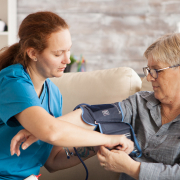Subtotal $0.00
Shopping cart
Subscribe to out newsletter today to receive latest news administrate cost effective for tactical data.
2478 Street City Ohio 90255
Subscribe to out newsletter today to receive latest news administrate cost effective for tactical data.
2478 Street City Ohio 90255
OPD Day
Monday , Wednesday , Friday9am - 6pm
Procedure Day
Tuesday , Thursday , Saturday9am - 6pm
Sunday: Closed

An acute stroke is a medical emergency that demands immediate attention. Stroke can occur when there is a blockage or rupture of blood vessels in the brain, leading to the interruption of oxygen and nutrient supply to brain cells. Without quick intervention, stroke can cause irreversible damage, potentially leading to long-term disability or even death. The faster the treatment, the better the chances of reducing brain damage and improving recovery outcomes.
Dr. Masood Ahmed, a highly skilled interventional cardiologist and endovascular specialist, offers expert stroke treatment in Lahore. With over 33 years of experience in the healthcare industry, Dr. Masood is dedicated to providing the most advanced and effective treatment for acute stroke patients. Dr. Masood Ahmed, a renowned Interventional Cardiologist and Endovascular Specialist, provides acute stroke treatment with 4.5 hours options that can significantly improve outcomes for patients.
There are primarily two types of stroke:
Both types of stroke require prompt intervention to reduce the risk of permanent damage and to maximize recovery chances.
Symptoms of an acute stroke can appear suddenly and may include:
B – Balance: Sudden loss of balance or coordination.
E – Eyes: (Mentioned in the paragraph below the acronym) Vision changes like double vision or loss of vision.
F – Face: Facial drooping or asymmetry when smiling.
A – Arms: Arm weakness or inability to raise both arms evenly.
S – Speech: Slurred, strange, or difficult speech.
T – Time: Act fast—call emergency services immediately (every minute counts).
These symptoms often require immediate medical intervention. A stroke is considered a medical emergency, and rapid treatment with in time frame 6 to 24 hours is crucial in minimizing brain damage and improving the chances of recovery.
This is provided by thrombectomy in large vessel occlusion (usually the middle cerebral artery [MCA]), which can reverse disability back to normal if the patient is treated in a timely fashion—within 6 hours, or in some cases up to 24 hours.
This service is available around the clock in Saleem Memorial Hospital for acute stroke patients.
When a stroke occurs, every minute counts. The brain is extremely sensitive to oxygen deprivation, and a stroke can lead to significant brain tissue damage within minutes. The sooner a stroke is treated, the higher the chances of reducing the severity of the damage and preventing long-term disability.
At Dr. Masood Ahmed’s clinic in Lahore, the approach to acute stroke treatment involves:

If you or someone you know is experiencing symptoms of a stroke, don’t wait. Time is of the essence when it comes to stroke treatment. Dr. Masood Ahmed and his expert team are available for immediate consultation and treatment. Early intervention can save lives and improve recovery outcomes.
Dr. Masood Ahmed’s expertise in treating acute stroke is grounded in his extensive experience in interventional cardiology and endovascular medicine. His ability to manage both ischemic and hemorrhagic strokes with the latest technologies ensures that patients receive the highest standard of care.
Treatment with tPA should ideally be given within 3 to 4.5 hours of stroke symptom onset to maximize its effectiveness.
Mechanical thrombectomy is a procedure where a catheter is used to physically remove a large clot from a blocked artery, helping restore blood flow to the brain.
Yes, many stroke survivors experience long-term effects like paralysis, speech difficulties, or cognitive impairments, but rehabilitation can help improve these symptoms.
While strokes are not always preventable, risk factors like high blood pressure, smoking, poor diet, and lack of exercise can be managed to reduce the risk.

01
Meet your cardiologist to discuss symptoms, medical history, and perform basic tests.

02
Review diagnostic results and receive a personalized heart care plan.

03
Undergo procedures like angioplasty or stenting to restore heart function.

04
Regular check-ins to monitor progress, adjust medications, and prevent relapse.
Connect with your doctor from the comfort of your home. Book a secure and private video consultation for expert medical advice—anytime, anywhere.

WhatsApp us